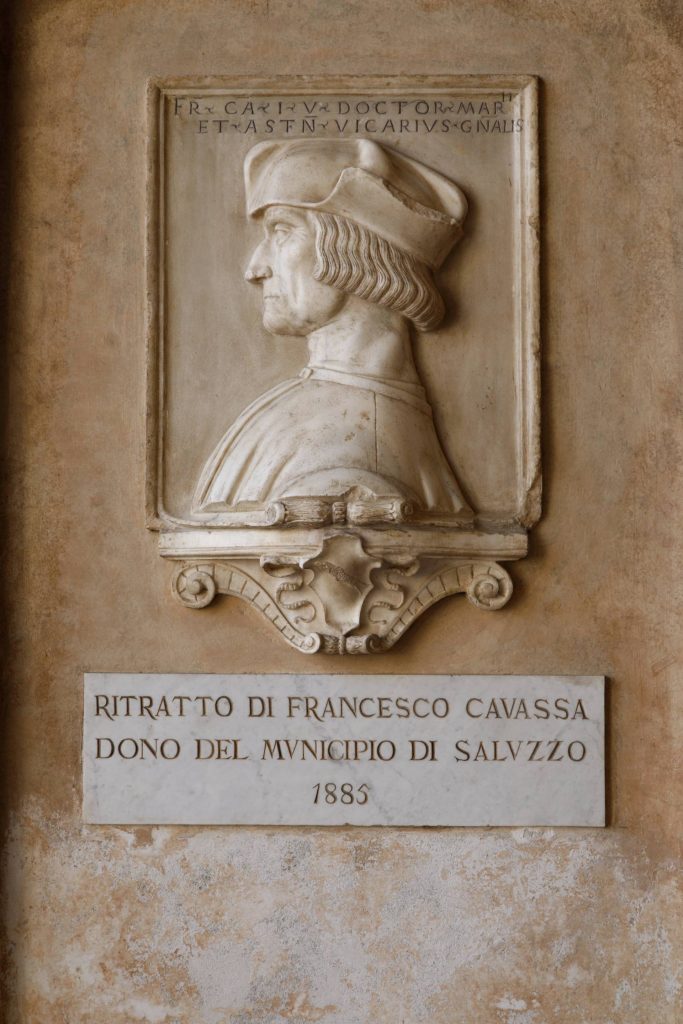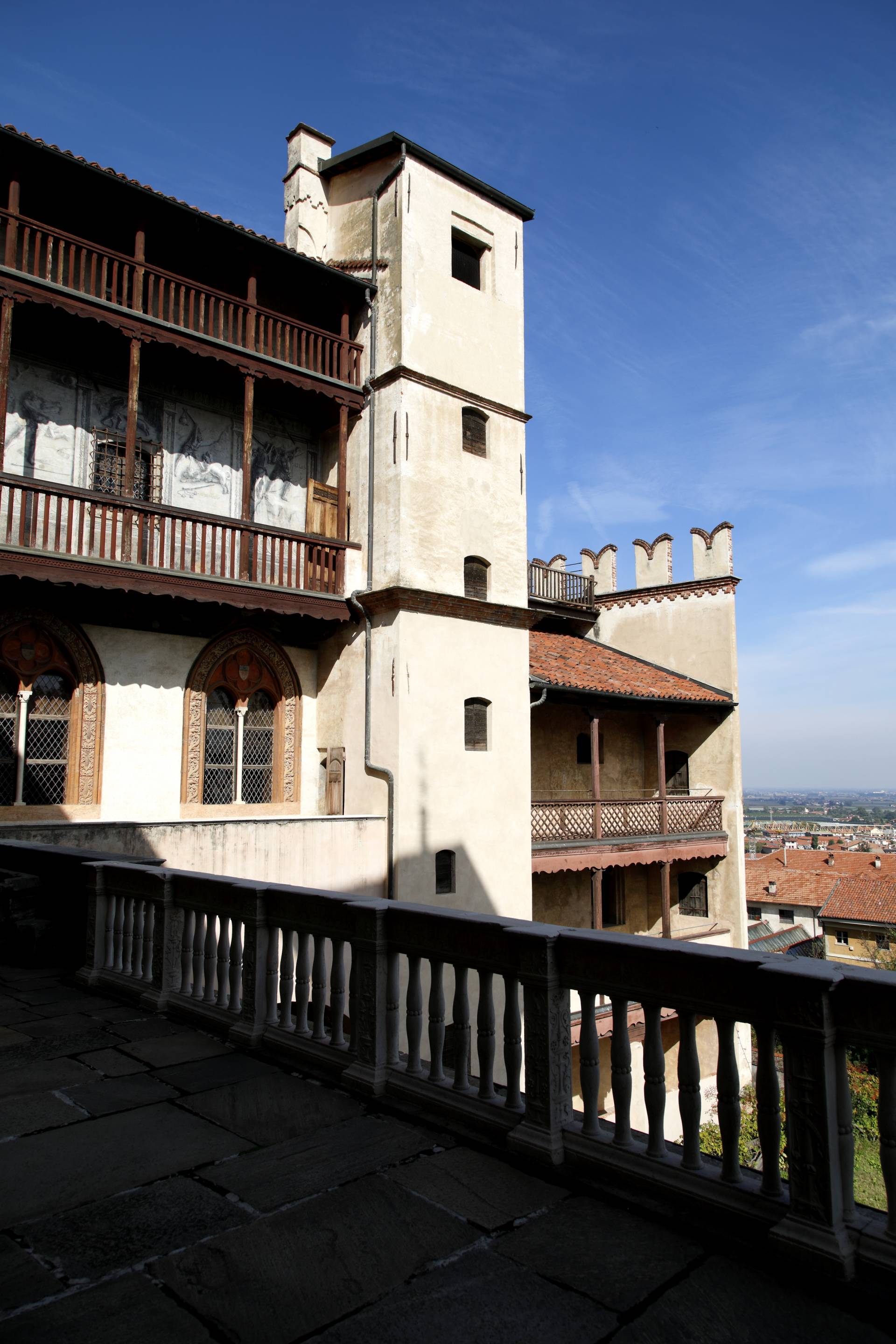Casa Cavassa is one of the symbolic buildings of the Saluzzo Renaissance, home of Galeazzo Cavassa and his son Francesco, who belonged to a noble family originally from Carmagnola. Galeazzo Cavassa probably bought the building after 1450 without making any major changes to the medieval structure. The decision to make this building the official residence of the Cavassa family was not accidental, as the house was located close to the main buildings of religious power (the church and convent of San Giovanni) and political power (the castle of the marquises and the old town hall).

Galeazzo Cavassa became Vicar General of the Marquisate, a position later held by his son Francesco. In 1505 Francesco became the sole owner of his father’s house, which was at the height of its splendour: frequented by intellectuals and court figures, the house was enlarged and transformed thanks to the work of numerous artists who were inspired by the Renaissance models from the Po valley.
The building remained the property of Francesco Cavassa’s heirs until 1775, although during this period it is assumed that the building was transformed and adapted to the needs of the various owners, as well as stripped off its original furniture, paintings and the rich library of illuminated manuscripts and legal texts that Francesco Cavassa had collected during his lifetime. In 1883, Marquis Emanuele Tapparelli D’Azeglio (1816-1890) bought it with the intention of restoring it and turning it into a museum. The restoration work led to a “completion in style”, i.e., the recovery of the building’s medieval and Renaissance appearances.
At the same time as the restoration work, Marquis Tapparelli bought objects on the antiques market that could document the Cavassa family and, more generally, works dating from the 1400s and 1500s, with the intention of recreating the furnishings of the house.
In 1888, Marquis Emanuele Tapparelli d’Azeglio bequeathed Casa Cavassa to the City of Saluzzo, along with the furniture and objects d’art it contained, so that it could be used “as a museum or for municipal festivals”. Despite the many transformations it underwent, several works of art have been preserved that bear witness to the splendour of the house at the beginning of the 16th century.
Among these are the marble portal and the wooden door (works by the Lombard sculptor Matteo Sanmicheli and dated between 1518 and 1528), visible on the façade in Via S. Giovanni: at the top is the Cavassa coat of arms (with the cavèdano, a freshwater fish that swims upstream) and the family motto “droit quoi quil soit” (“forward at any cost” or “justice whatever”). In addition, one of the walls of the loggia on the first-floor exhibits grisaille frescoes by Hans Clemer depicting some of Hercules’ works, painted between 1506 and 1511. Today, the museum spreads over two floors, presenting a sequence of 15 rooms with painted wooden ceilings and decorated walls.
Among the works exhibited in the rooms are: the painted and gilded panel depicting the Madonna of Mercy by Hans Clemer (c. 1499) and the wooden choir from the late Gothic period. ) and the late Gothic wooden choir from the chapel of the Marquises of Saluzzo in Revello (room 5); the polyptych ‘The Adoration of the Magi’, by Jacobino Longo, dated 1530 (room 9); the portraits of Charles Emmanuel I of Savoy and his wife Catherine of Austria, painted by Giovanni Caracca around 1590 (room 13).




